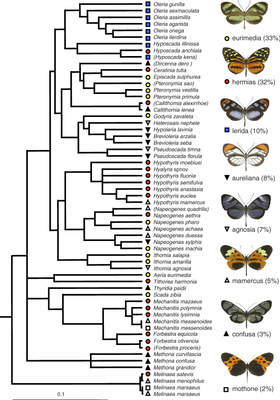
Phylogenetic signal is an evolutionary and ecological term, that describes the tendency or the pattern of related biological species to resemble each other more than any other species that is randomly picked from the same phylogenetic tree.[1][2]
- ^ Münkemüller, Tamara; Lavergne, Sébastien; Bzeznik, Bruno; Dray, Stéphane; Jombart, Thibaut; Schiffers, Katja; Thuiller, Wilfried (2012-04-10). "How to measure and test phylogenetic signal". Methods in Ecology and Evolution. 3 (4): 743–756. doi:10.1111/j.2041-210x.2012.00196.x. ISSN 2041-210X.
- ^ Blomberg, Simon P.; Garland, Theodore; Ives, Anthony R. (2003). "Testing for Phylogenetic Signal in Comparative Data: Behavioral Traits Are More Labile". Evolution. 57 (4): 717–745. doi:10.1111/j.0014-3820.2003.tb00285.x. ISSN 0014-3820. JSTOR 3094610. PMID 12778543. S2CID 221735844.
© MMXXIII Rich X Search. We shall prevail. All rights reserved. Rich X Search
